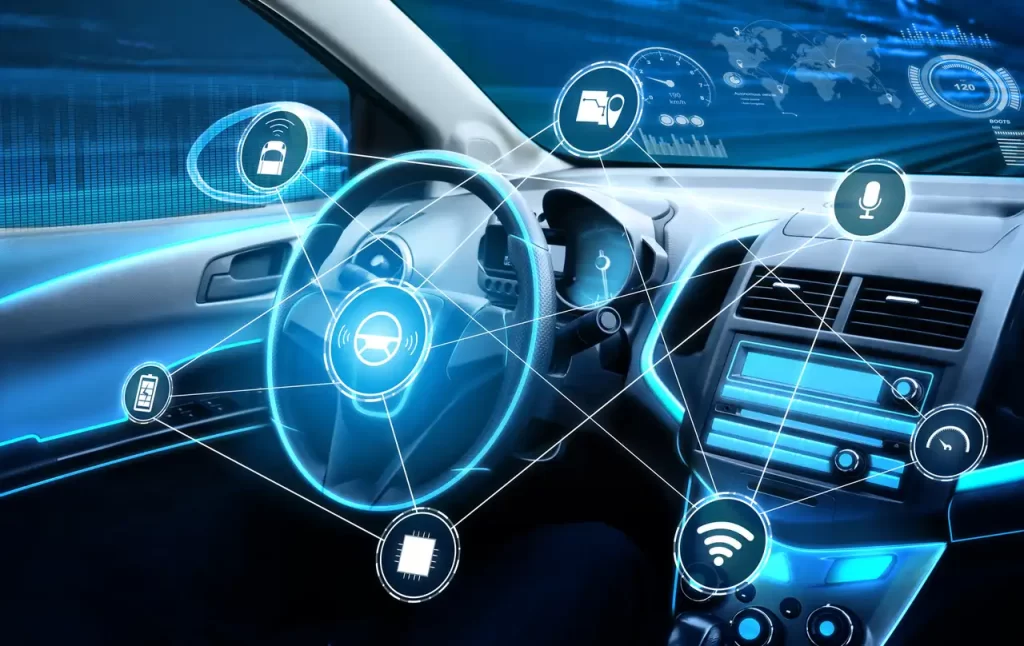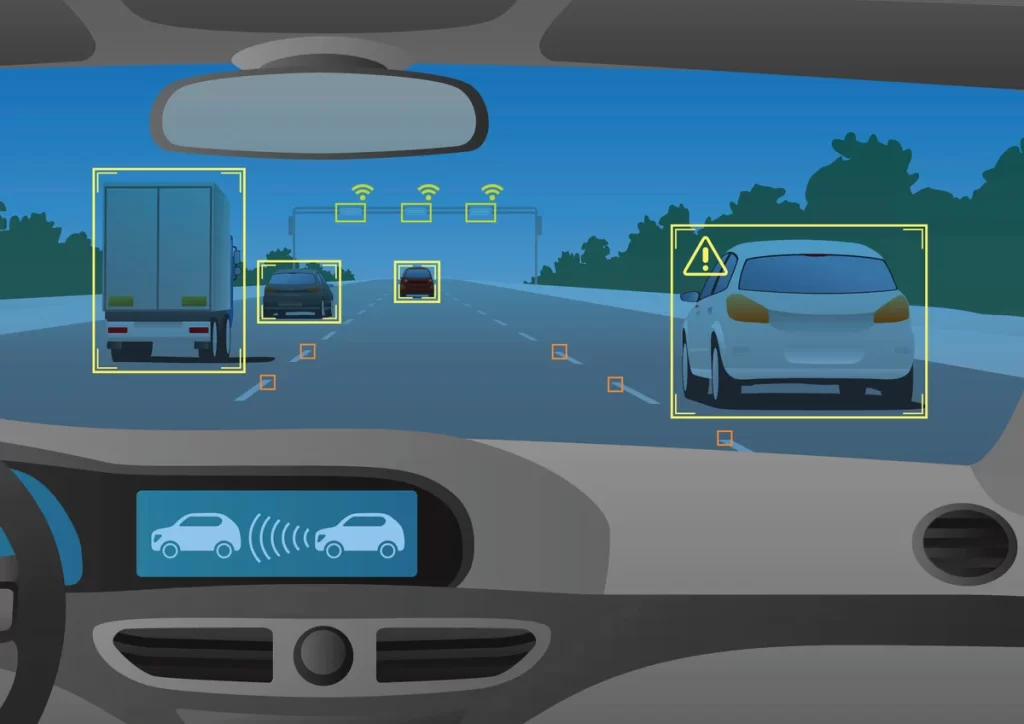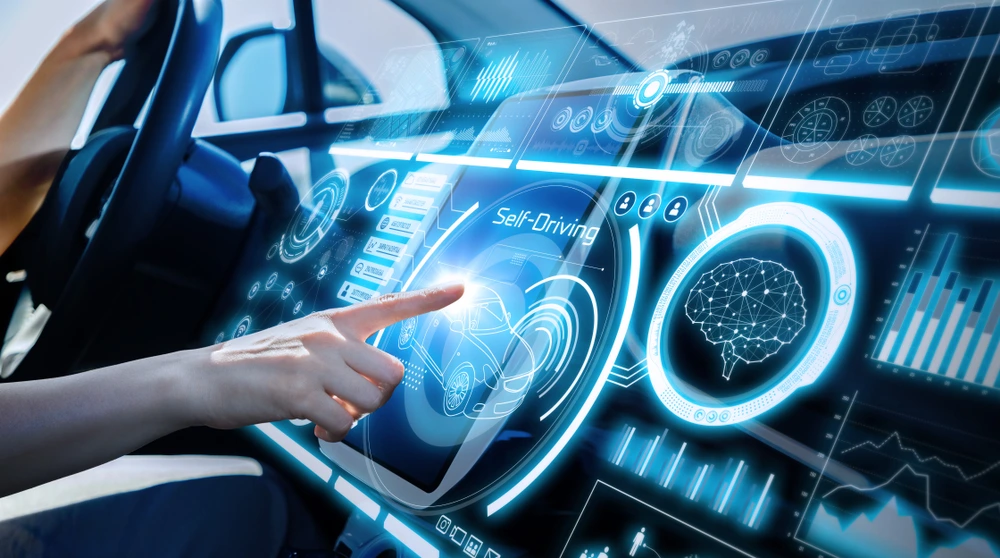What if car crash investigations could be solved in minutes instead of weeks? Car crashes happen in seconds, but understanding their true cause often takes days or even weeks. Thanks to the power of Artificial Intelligence and Machine Learning, that’s no longer just a question, it’s now a reality.
These groundbreaking technologies are radically transforming the way we analyze accidents by quickly processing vast amounts of data, uncovering hidden patterns, and pinpointing crash causes with unmatched precision. In this blog, we’ll dive into how these innovations are reshaping the future of crash analysis.
AI in Accident Prevention and Response

AI is transforming traffic accident investigations and response times. By analyzing real-time data, it predicts accident hotspots and suggests preventive actions. This helps authorities and car makers create smarter safety systems. In case of a crash, AI tools quickly assess the situation, helping responders act faster and reduce harm.
Let’s take a closer look at these AI technologies that are driving these changes.
-
Advanced Driver Assistance Systems (ADAS)

Advanced Driver Assistance Systems (ADAS) are transforming the way we drive and how we understand crashes. With AI built into these technologies, modern vehicles can now detect risks, warn drivers, and even take action to prevent accidents.
Key Features of ADAS:
- Automatic emergency braking to avoid collisions
- Lane keeping assistance to prevent unintentional drifts
- Blind spot monitoring for safer lane changes
- Adaptive cruise control for consistent safe distances
These systems don’t just prevent accidents but they also play a huge role in traffic accident investigation. By collecting real time data during incidents, ADAS helps investigators reconstruct crash scenes with far more accuracy than traditional methods.
As ADAS continues to advance, it’s paving the way for safer roads and quicker, more reliable investigations. Notably, projections show that 90% of all vehicles sold worldwide will be equipped with ADAS by 2030, contributing to a market expected to hit USD 65.1 billion by the same year.
-
Predictive Analytics
AI-driven predictive models analyze vast datasets to identify crash risk factors and patterns. These systems examine historical accident data alongside real-time inputs including traffic conditions, weather, road geometry, and driver behavior.
Predictive analytics enables transportation authorities to forecast where and when accidents are most likely to occur. This information allows for proactive deployment of law enforcement resources to high risk areas and implementation of targeted safety measures.
The models incorporate diverse data sources such as comprehensive incident databases, real-time driving feeds, weather reports, and traffic conditions to create more accurate predictions than previously possible with traditional methods.
-
AI-Driven Traffic Management
Smart traffic management systems powered by AI can detect potential hazards and take preventive actions. These systems use technologies like:
- Real time incident detection through traffic cameras and sensors.
- Dynamic adjustment of traffic signals to optimize flow.
- Automated alerts to emergency services when accidents occur.
AI-powered traffic management can also coordinate emergency response efforts. For instance, in Germany, systems using GPS and LTE mobile communications help emergency vehicles navigate through traffic by automatically adjusting traffic lights.
AI in Accident Response and Analysis

AI is reshaping how we respond to and analyze traffic accidents. From detecting crashes in real time to quickly identifying their causes, AI makes the entire process faster and more accurate. It helps emergency teams reach the scene sooner and supports investigators with reliable data.
To understand this better, let’s break it down into the key technologies powering this transformation.
-
Real-Time Crash Detection
AI-driven systems are transforming the way accidents are detected and responded to. Using IoT sensors, cameras, and deep learning algorithms, these technologies can identify crashes as they happen, drastically reducing response times. The ability to analyze data in real-time allows for immediate notifications to emergency responders, traffic control centers, and even nearby vehicles.
This quick response not only ensures faster assistance but also helps prevent additional accidents. AI systems continuously monitor traffic conditions, giving authorities real-time insights to enhance road safety and improve decision making in high risk situations.
-
AI-Powered Surveillance
AI powered surveillance is transforming traffic accident investigation by offering real-time insights and reliable data. These systems use smart cameras and algorithms to monitor roads 24/7, instantly spotting unusual driving behavior, sudden stops, or collisions.
Here’s how it helps:
- Real-time detection: AI quickly identifies accidents as they happen, alerting emergency services without delay.
- Accurate video analysis: High resolution footage is processed instantly to capture the exact moment of impact.
- Data driven insights: It provides clear evidence, helping investigators understand the cause and sequence of events.
With faster and more reliable information, AI powered surveillance is becoming an essential tool for safer, smarter roads.
-
Automated Review of Police Accident Reports
Reviewing police accident reports used to take hours of manual work, often leading to delays and missed details. Now, AI is changing that. It scans and analyzes reports instantly, pulling out key information like time, location, vehicle data, and possible causes with impressive accuracy.
It also cross references other sources, helping investigators spot inconsistencies or missing information. This speeds up car crash investigations and ensures no critical detail is overlooked. With automated reviews, agencies can respond faster, reduce errors, and rely on clean, organized data to make informed decisions. It’s a smarter way to handle a once time consuming task.
Machine Learning in Crash Prediction

Machine Learning is changing how we predict and prevent car accidents. By analyzing data on past crashes, road conditions, weather, and driver behavior, it can accurately forecast future accidents. These insights help authorities take proactive measures like adjusting traffic signals or adding warning signs to high risk areas. Now, let’s take a look at how Machine Learning helps predict accidents and understand how bad they might be.
-
Crash Occurrence and Frequency Prediction
Machine learning is transforming crash prediction, moving beyond traditional statistical methods. Road safety experts now use ML techniques to develop models that focus on:
- Crash Frequency: Predicting how often accidents are likely to occur.
- Crash Severity Classification: Estimating how severe accidents might be.
- Combined Frequency Severity Analysis: Analyzing both the likelihood and the potential impact of accidents.
Combining past accident data with current traffic conditions is one of the most powerful advancements yet. This method creates a more dynamic and accurate prediction framework, capturing both past accident trends and current road risks.
Additionally, the introduction of time specific crash frequency models such as those focusing on hourly or peak periods, addresses the limitations of older models. These newer approaches allow for more detailed predictions, helping authorities take proactive measures and improve road safety more effectively.
-
Injury Severity Prediction
Machine learning is crucial in predicting the severity of injuries in accidents. By analyzing factors like:
- Crash Speed
- Vehicle Type
- Impact Location
ML models assess the likelihood of various injury levels. This allows emergency responders and medical teams to be better prepared, ensuring they can act quickly and efficiently in critical situations.
Additionally, analyzing past accident data helps in designing safer vehicles and improving road infrastructure to reduce the risk of serious injuries.
Ultimately, injury severity prediction plays a key role in reducing fatalities and making roads safer for everyone.
Comparison: Traditional vs. AI-Enhanced Crash Investigation

| Aspect | Traditional Reconstruction | AI/ML-Enhanced Reconstruction |
| Evidence Analysis | Manual, time-intensive | Automated, rapid, large-scale |
| Data Sources | Physical evidence, witness input | Sensor data, video, telematics, big data |
| Accuracy | Dependent on expertise, limited | Improved with pattern recognition, less prone to human error |
| Speed | Slower, especially for complex cases | Faster, with potential for real-time analysis |
| Predictive Capability | Retrospective only | Predictive analytics for prevention |
| Consistency | Variable, subjective | More standardized, objective |
The shift from conventional to AI based traffic accident investigation represents a fundamental change in approach rather than mere technological upgrading. This comparison highlights key differences between traditional methods and AI/ML enhanced reconstruction.
Challenges and Future Directions
While AI and Machine Learning have reshaped how we approach crash analysis, the road ahead still has obstacles. These technologies are powerful, but they need refinement to fully integrate into everyday traffic systems.
Key challenges include:
- Inconsistent data formats and lack of standardization
- Limited transparency in AI decision making
- The need for real-time processing capabilities
- Balancing automation with human involvement
The future of Traffic Accident Investigation lies in improving these areas. As tools evolve, combining innovation with ethical oversight will be crucial to ensure both safety and public trust.
-
Data Quality and Integration
For AI systems to work well, they must be fed high quality, consistent data. But that’s easier said than done. Accident data often comes from different sources and in varying formats, creating major barriers for smooth integration.
Challenges in data handling:
- Incomplete or outdated crash records
- Inconsistent reporting standards across regions
- Difficulty merging data from cameras, sensors, and vehicles
To improve Car Crash Investigation accuracy, we need to focus on better data collection methods and streamlined integration strategies that turn scattered information into actionable insights.
-
Model Robustness
AI models must be resilient, flexible, and scalable. A model trained in one environment might not work as well in another due to different road designs, weather conditions, or driving habits.
To ensure model reliability, we need to:
- Train systems with diverse datasets
- Regularly update models with new data
- Test performance across varied traffic scenarios
Robust models are not just smarter, they’re safer. Their ability to adapt to real world situations is what will ultimately make them dependable for wide scale traffic safety applications.
-
Human Oversight
Even as AI grows more capable, human oversight remains non negotiable. Machines are great at crunching numbers, but they still need human guidance to make sense of complex, real-world situations.
Why human input matters:
- AI lacks context and moral reasoning
- Experts can interpret gray areas AI might miss
- Oversight ensures fairness and accountability
Rather than replacing professionals, AI should support them. The most effective systems are those where humans and machines work side by side combining speed and data with experience and judgment.
Conclusion
Artificial Intelligence and Machine Learning are changing the game in traffic accident investigation. What used to take weeks now happens in minutes. From predicting crash hotspots to analyzing incidents in real time, these technologies are transforming traffic safety into a proactive effort instead of a reactive one.
With smarter systems like advanced driver assistance, real-time traffic control, and predictive models, we’re seeing a shift in how accidents are both prevented and understood. The road ahead isn’t without bumps; data quality, model flexibility, and the need for human judgment still matter.
But the progress is clear. We’re not just improving investigations, we’re reshaping the future of road safety. And that future is already well underway.

